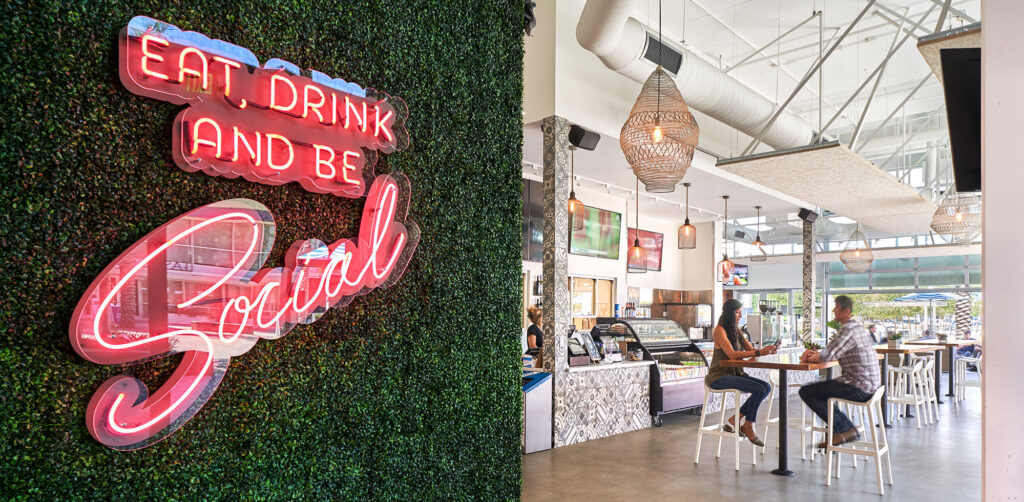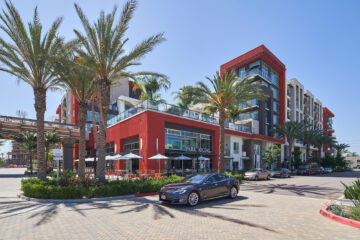
A Solution For Vacant Ground Floor Retail
Brandon Wernli and Philip Otto, a bit like yin and yang, complement each other’s strengths. Phil, a designer and cultural anthropologist by trade, is passionate about making human needs and community vitality the focus of retail design. Brandon, an executive director of production focused on technical execution, turns concepts into robust experiences. Together they are part of the creative leadership behind the retail studio at KTGY, the national multi-disciplinary firm. Today, they share with us a solution to the problem of ground floor vacancies in multifamily buildings.
Q: BRANDON, PHIL, WHERE ARE WE SEEING A LACK OF TENANCY, AND WHY?
Brandon: With retail vacancies across the US currently at their lowest level since 2007, our focus is specifically on the ground floor vacancy in mixed-use buildings with municipality mandated street level retail. Some developers have come to see street level retail requirements as a burden, and we understand that reasoning. What Phil and I want to do is help our clients think differently about these spaces.
Phil: The landscape for brick-and-mortar retail has certainly changed, but the desire to be a part of something, face-to-face, is stronger than ever. The trick is, if you can get all your essentials delivered to your door, then brick and mortar needs to offer an experience you won’t get elsewhere.
Q: WHY INVEST IN EXPERIENCE-FOCUSED RETAIL?
Phil: First, we demonstrate to our clients that retail is an amenity that can benefit their bottom line. Working with digital native brands has shown me that online retailers generate more business when they have a storefront; the location is a billboard for the brand. An engaged street level signals the desirability and value of a development to the community and future tenants. By making sure the ground floor never feels vacant and targeting a tenant mix that’s in step with the demographic needs or desires of the neighborhood, spaces can remain fully leased and “ladder up” to highly valuable long-term tenants.
Q: HOW DO YOU START CREATING “LADDER” OPPORTUNITIES?
Brandon: Once you understand that retail is the amenity, then it becomes clearer how to make street level spaces attractive to a wider variety of tenants. To do that the space has to be move-in ready. I typically work with clients who are developing a new building. Their mindset today is the same as it was 10 years ago — attract a big tenant who will immediately commit to a long-term lease and negotiate for tenant improvements as part of their lease agreement. With vacancies at an all-time low, those tenants are few and far between. So, we show our clients value in evolving that mindset. When they do, they can start attracting the tenants that draw guests, resulting in a continuously leased ground floor.
Q: WHAT DOES THAT REALLY LOOK LIKE? HOW DO YOU DESIGN TO ATTRACT EXCITING TENANTS?
Brandon: These spaces must be attractive to digital brands, local businesses or anyone looking to move into brick and mortar; I call it a “white box.” A good example is something like a local coffee chain: a business with presence and recognition but who would shy away from occupying an unfinished space. Investing in utility lighting, a simple restroom or stub-in, and basic infrastructure, this space becomes attractive the smaller tenants that attract foot traffic, local buzz and good will, but who don’t have the capital of a big chain… Making the upfront investment for those smaller tenants can help lease-up happen prior to grand opening.
Q: WHAT MAKES THE LADDER WORK?
Phil: This is important to understand: retail is an essential amenity for the way we live now. And you can get to profitability faster by making the street level a hub for the independent cafe or digital brand or artisan market. These are the kinds of tenants that get people invested in your building, and they show off the quality of the whole development. Our clients can build an exciting atmosphere with shorter-term tenants and use that buzz to ladder up to longer-term leases. We connect our clients with partners who have the resources to build a lease framework that keeps that space occupied while laddering up to the most profitable tenants.

